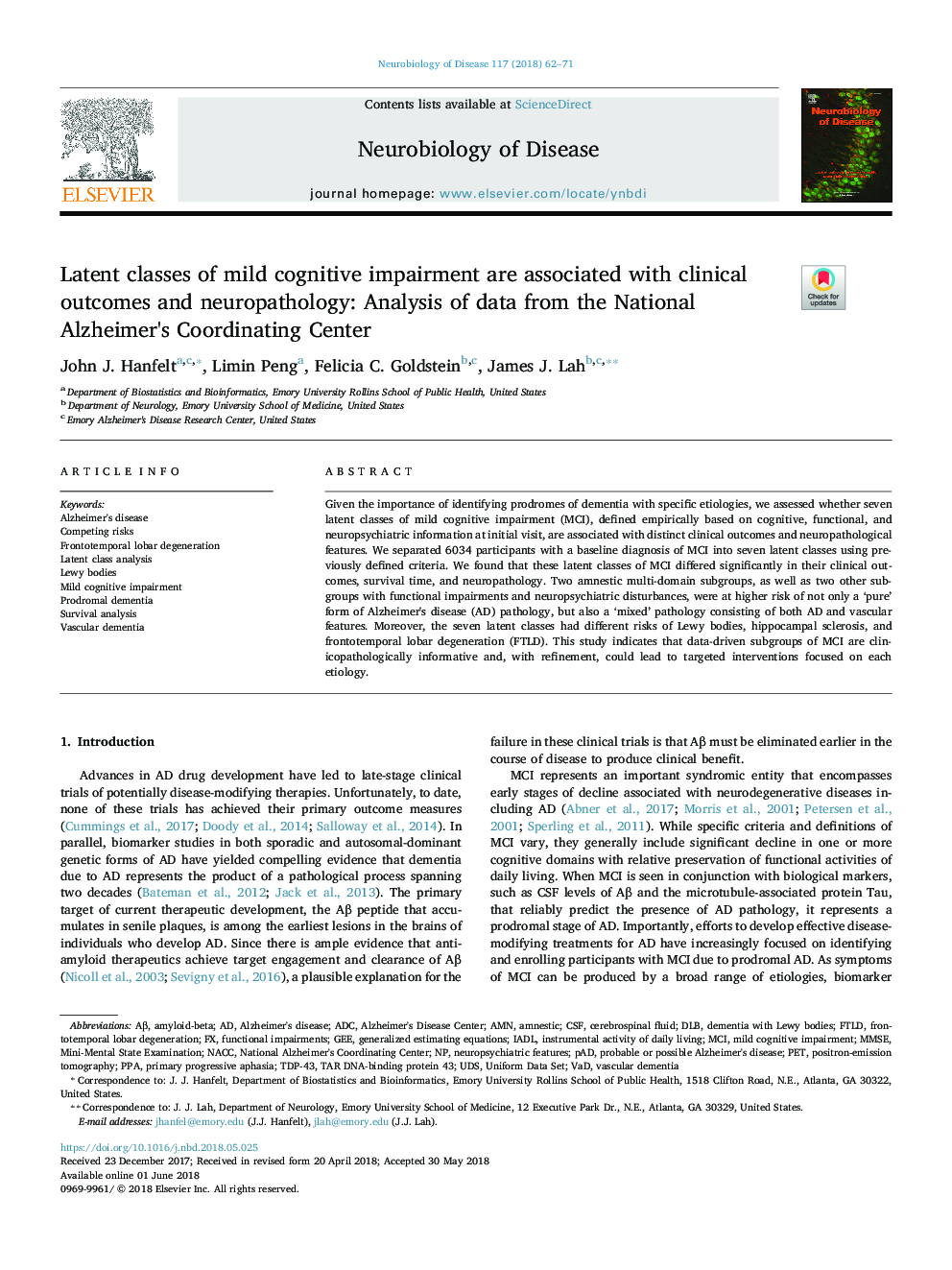| Article ID | Journal | Published Year | Pages | File Type |
|---|---|---|---|---|
| 8686325 | Neurobiology of Disease | 2018 | 10 Pages |
Abstract
Given the importance of identifying prodromes of dementia with specific etiologies, we assessed whether seven latent classes of mild cognitive impairment (MCI), defined empirically based on cognitive, functional, and neuropsychiatric information at initial visit, are associated with distinct clinical outcomes and neuropathological features. We separated 6034 participants with a baseline diagnosis of MCI into seven latent classes using previously defined criteria. We found that these latent classes of MCI differed significantly in their clinical outcomes, survival time, and neuropathology. Two amnestic multi-domain subgroups, as well as two other subgroups with functional impairments and neuropsychiatric disturbances, were at higher risk of not only a 'pure' form of Alzheimer's disease (AD) pathology, but also a 'mixed' pathology consisting of both AD and vascular features. Moreover, the seven latent classes had different risks of Lewy bodies, hippocampal sclerosis, and frontotemporal lobar degeneration (FTLD). This study indicates that data-driven subgroups of MCI are clinicopathologically informative and, with refinement, could lead to targeted interventions focused on each etiology.
Keywords
IADLAMNUDSPPAAβTDP-43FTLDADCDLBNAccMMSEPrimary progressive aphasiaAmnesticamyloid-betasurvival analysismild cognitive impairmentFunctional impairmentsLewy bodiesgeneralized estimating equationsAlzheimer's diseaseLatent class analysisDementia with Lewy bodiespositron-emission tomographyGEEVascular dementiafrontotemporal lobar degenerationCompeting risksInstrumental activity of daily livingCSFCerebrospinal fluidMini-Mental State ExaminationMCIPETPADtar DNA-binding protein 43VAD
Related Topics
Life Sciences
Neuroscience
Neurology
Authors
John J. Hanfelt, Limin Peng, Felicia C. Goldstein, James J. Lah,
